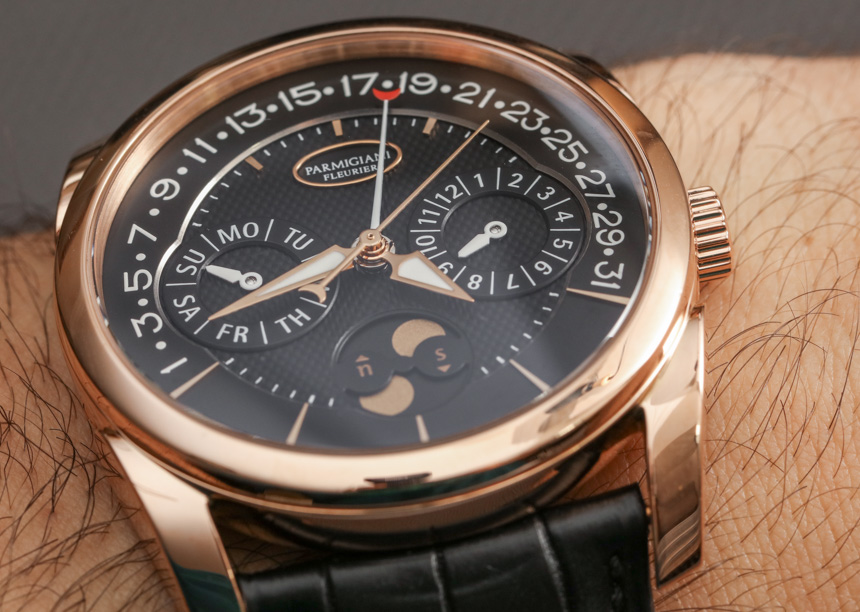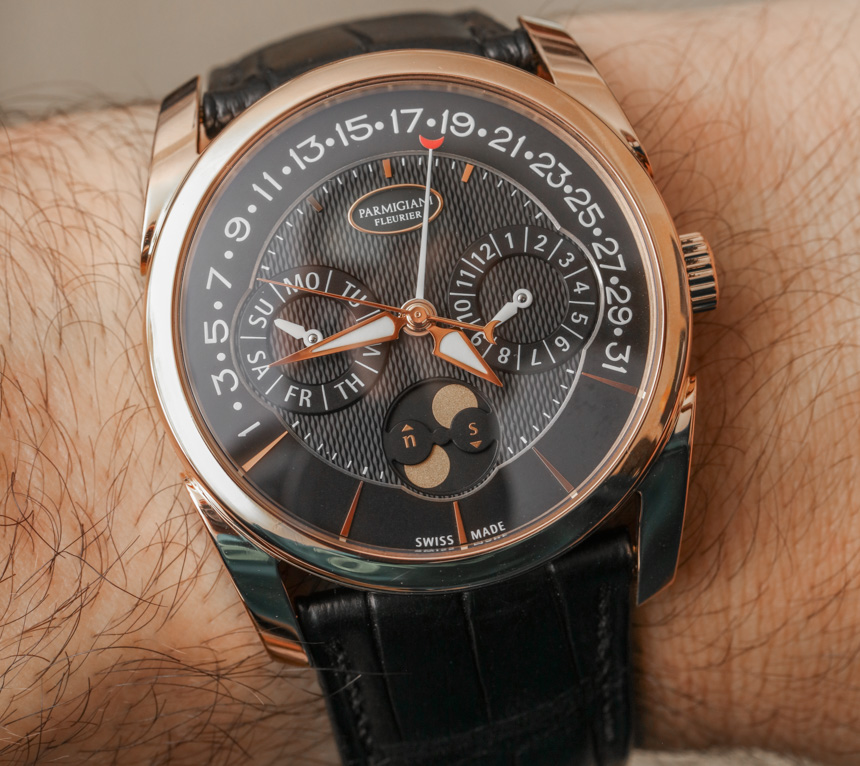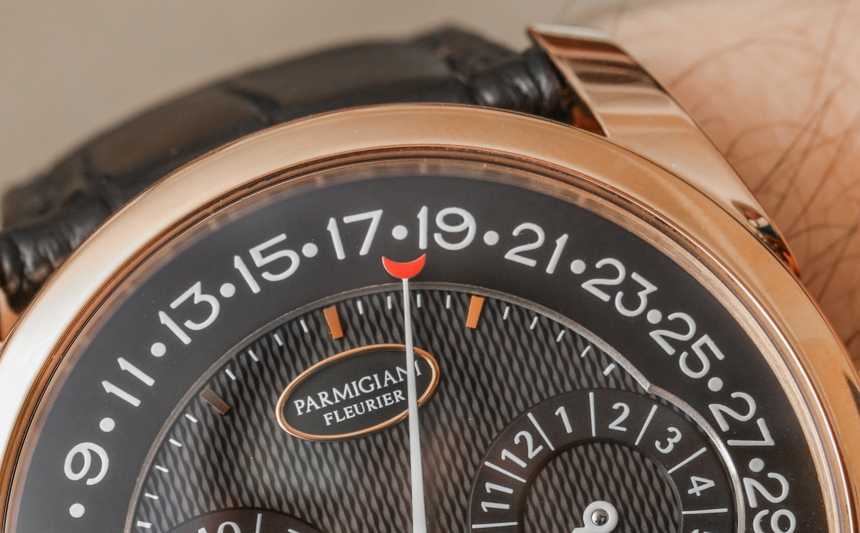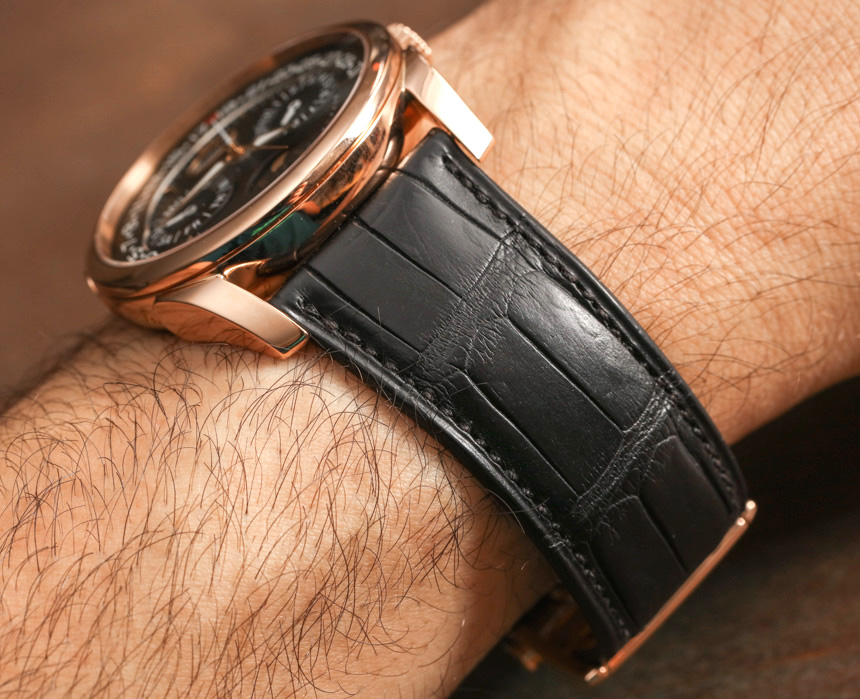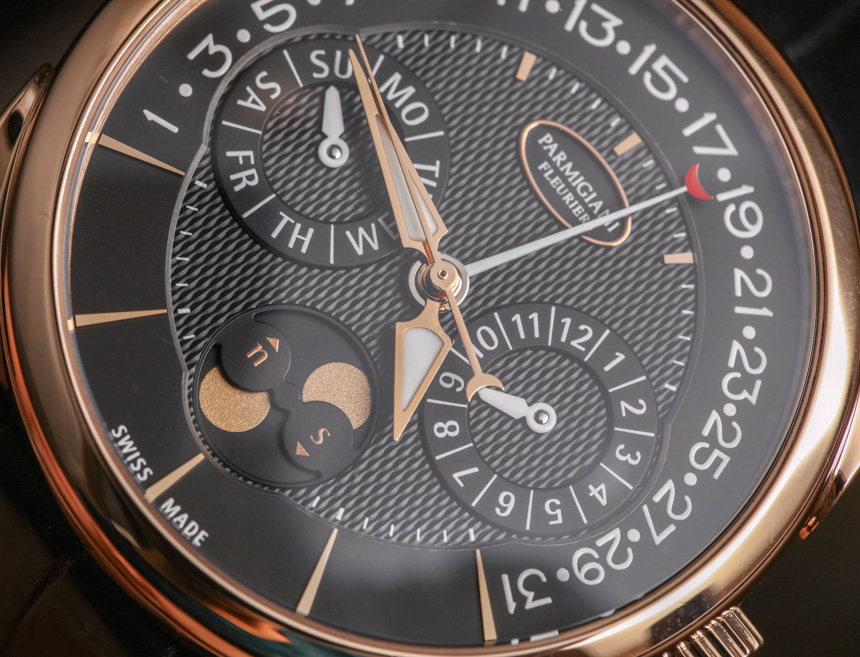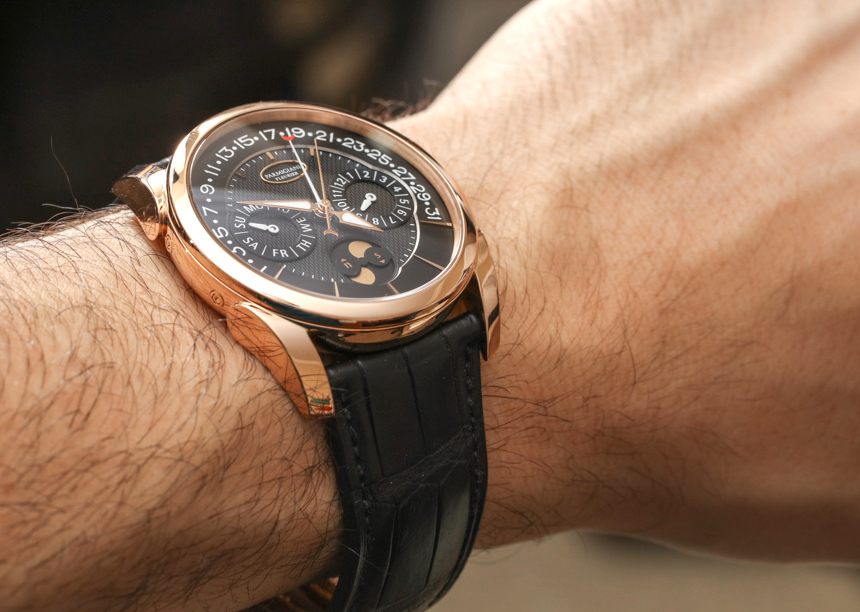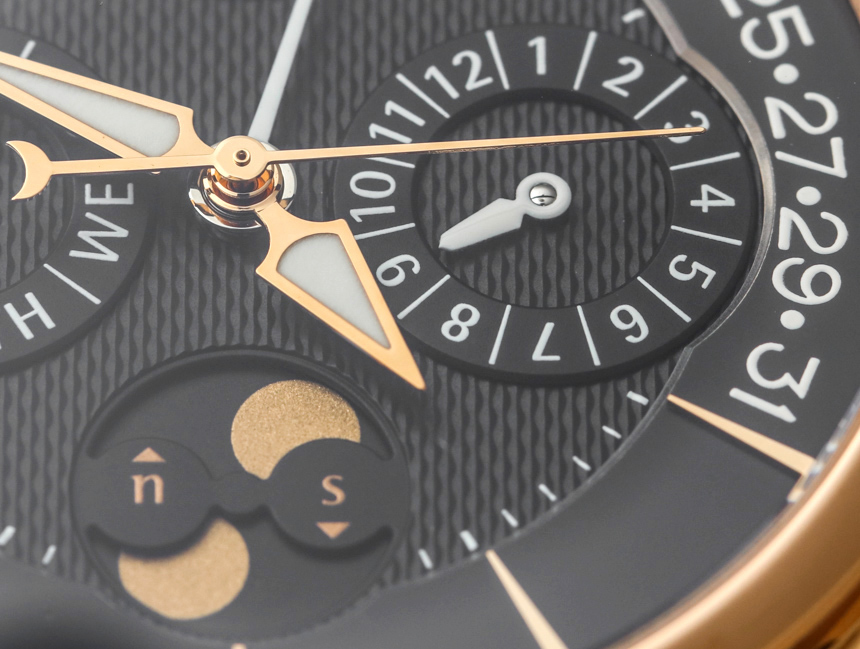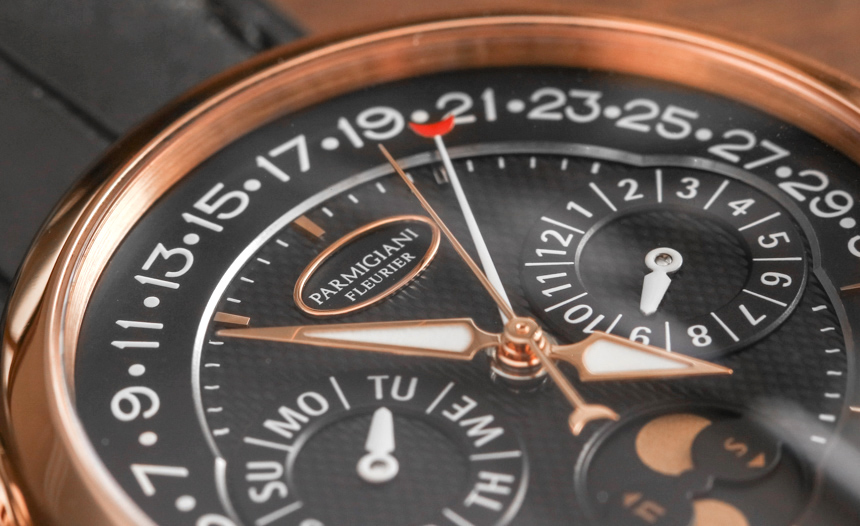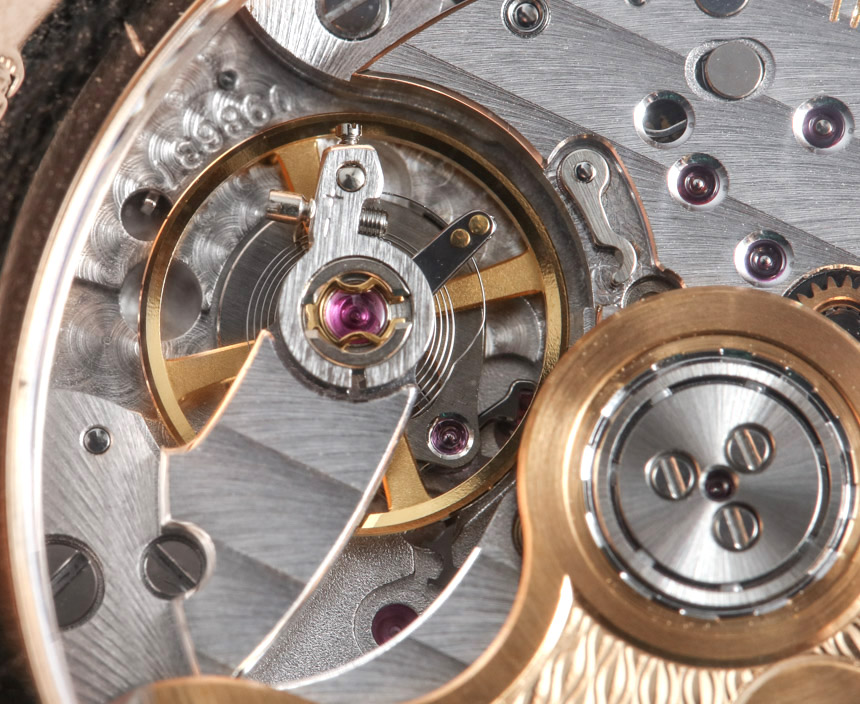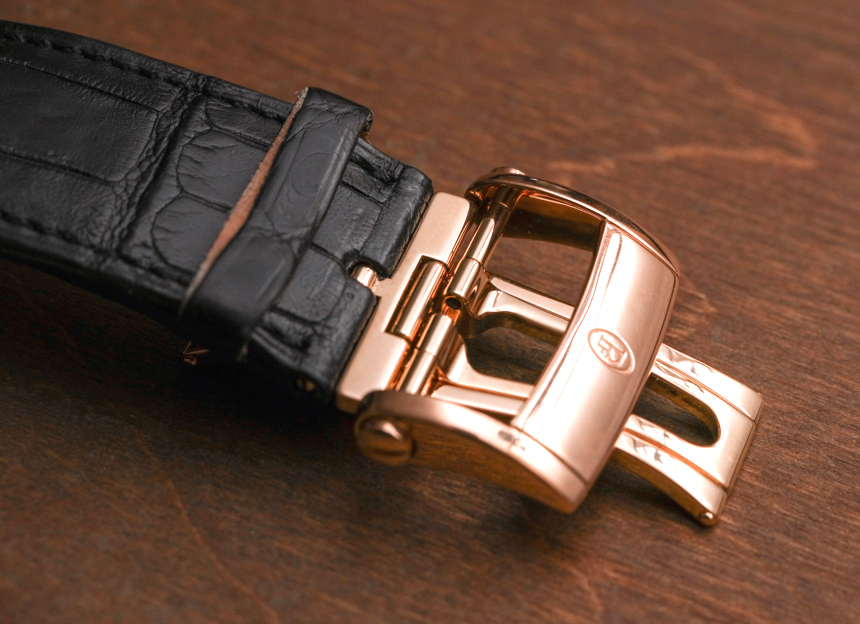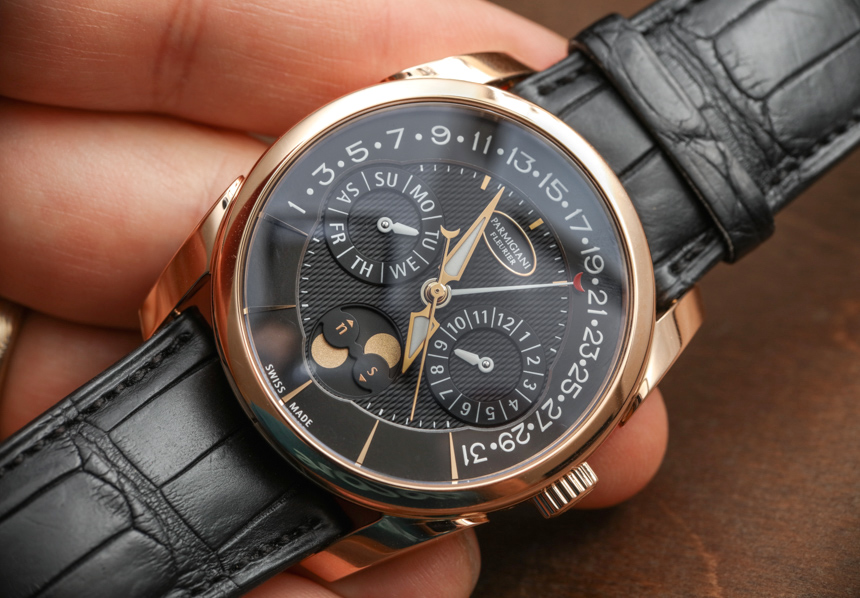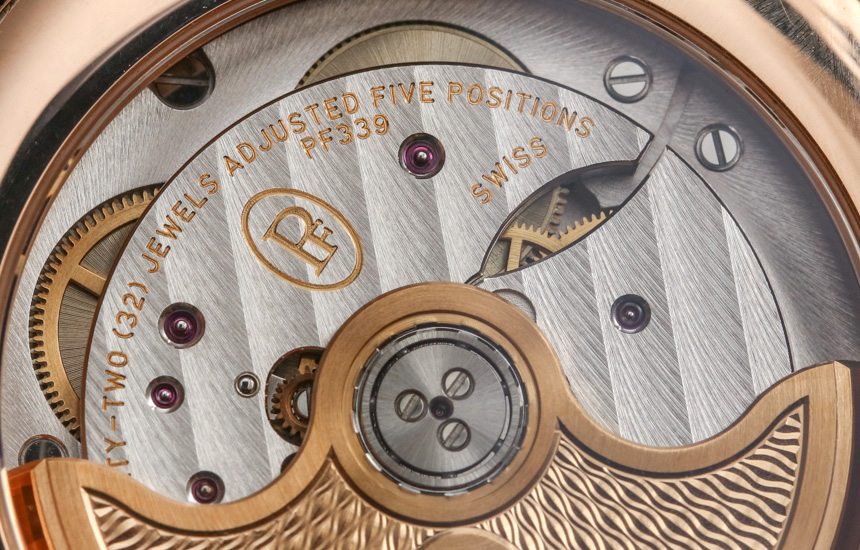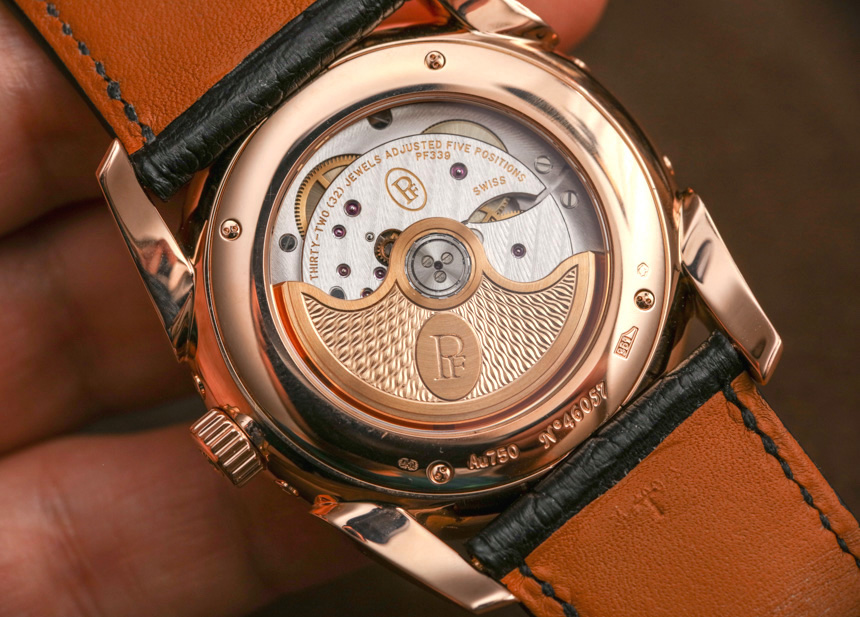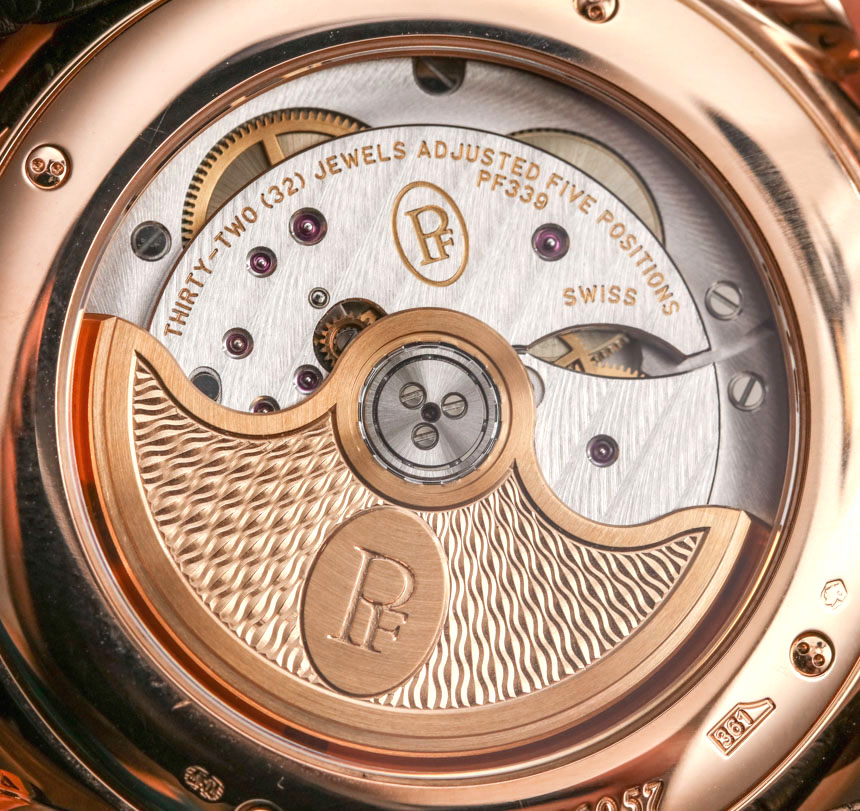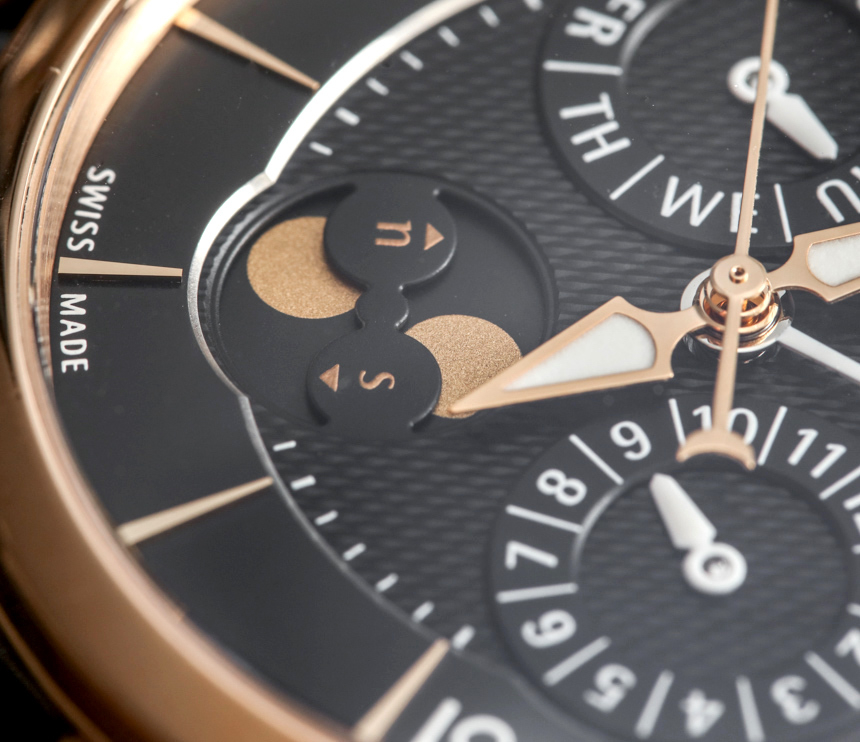
One of the more distinctive features of the PF339 movement is the retrograde date indicator hand. Some calendar watches out there have “pointer-style” date indicator hands which go around the entire periphery of the dial. Here, Parmigiani has designed it to take up only about two thirds of the dial, which I must admit makes the entire concept of a pointer date much more attractive. Other calendar complications include a dial for the day of the week, the month in digits, and a “double” moon phase indicator above 6 o’clock. This is just a visual trick, basically, but technically it does give you the moon phase as you would see it from both the Northern and Southern Hemispheres.
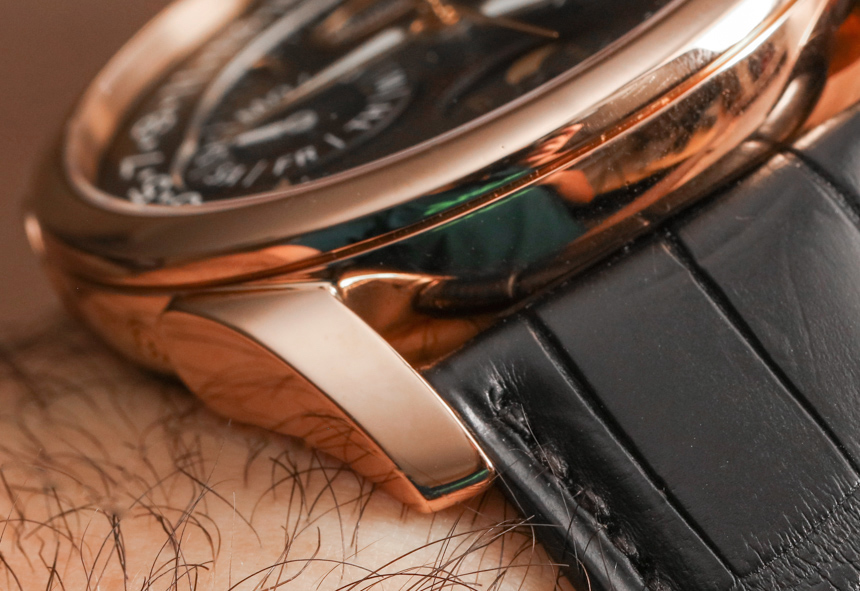
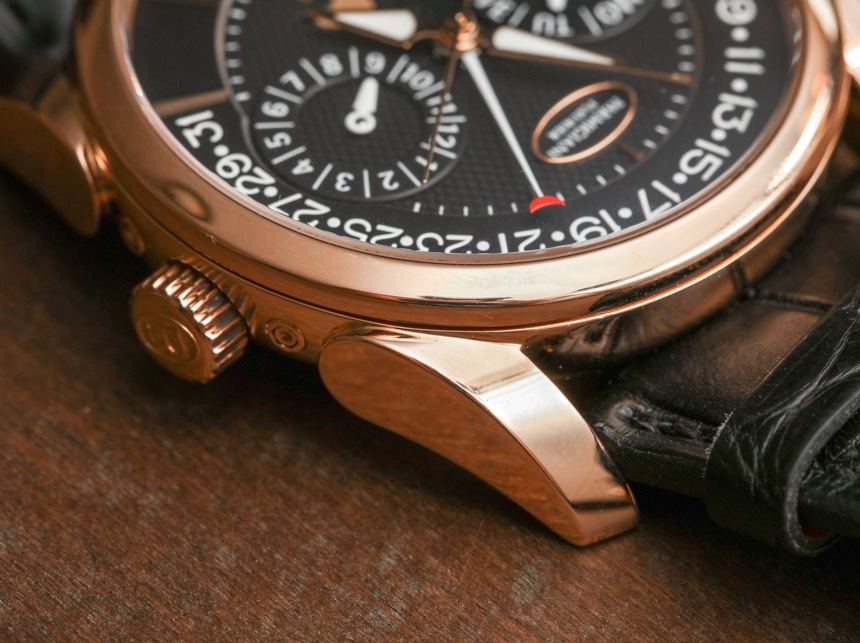
Adjusting the annual calendar indicators is done not via the crown, but via four distinct inset pushers around the case with two on each side. This is a common but simple way of adjusting indicators. I would have liked Parmigiani to label the pushers so that you know what you are adjusting. Also, if you don’t have just the right tool you can scratch your watch if using a metal stylus, for example, while adjusting these settings. Ergonomics and sensibility are too rarely in the mind of many watch designers beyond reading the dial and wearing the item. The good news is that you’ll never accidentally screw up the calendar settings when just wanting to wind the watch manually or set the time. In the video review, I also mentioned how nice it would be if there were a hidden stylus on the case or strap that would allow for the inset pushers to be adjusted easily, at any time.
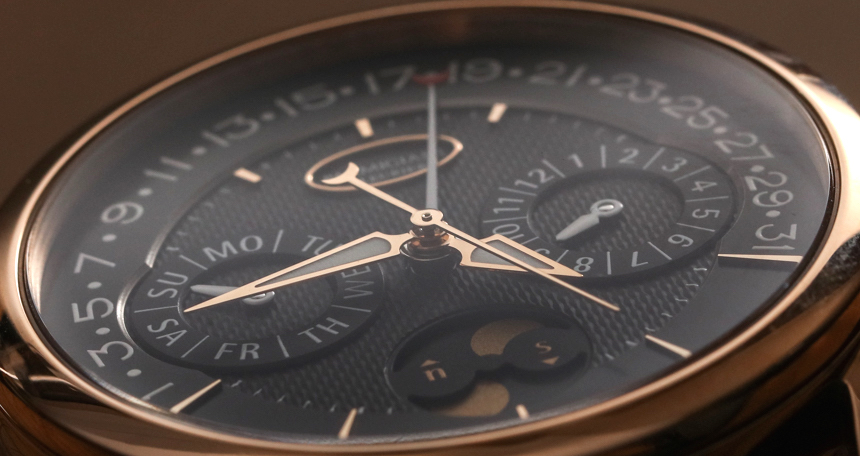
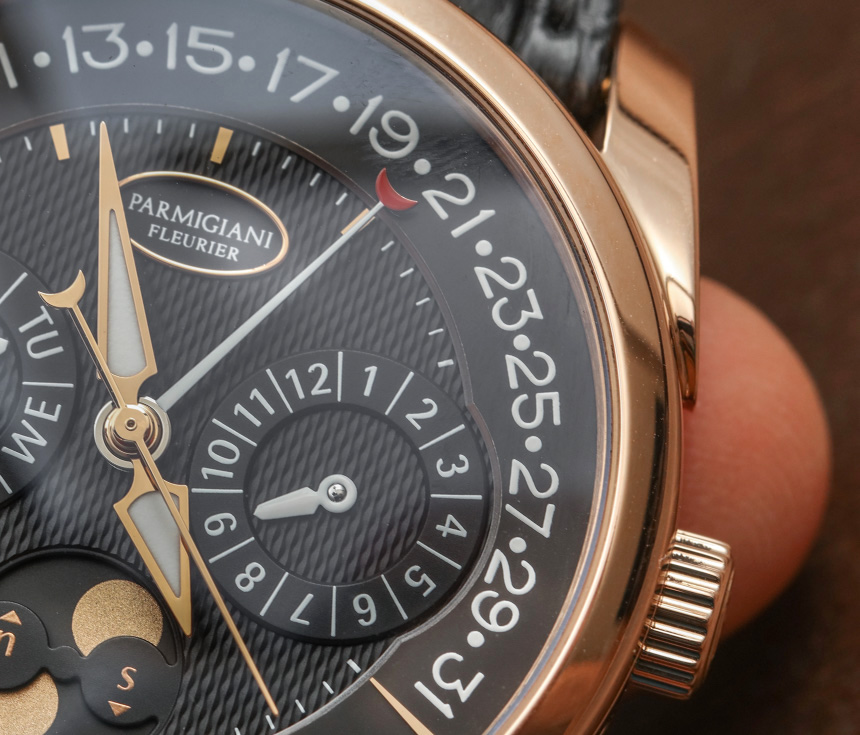
While the Tonda Centum had hour markers on the outermost chapter ring, the Parmigiani Tonda Quator was designed with the hour marker ring inside the date indicator scale. This means that the hands are shorter as a result. Proportionally it makes sense, but the smaller dial for the time is actually hard to see among the various complication indicators which can make the hands feel short. The hands are attractive in design and painted with luminant, and Parmigiani actually did make them the right size for the dial, but viewed from a few feet away they might appear short to people like me with watch-hand-size OCD.
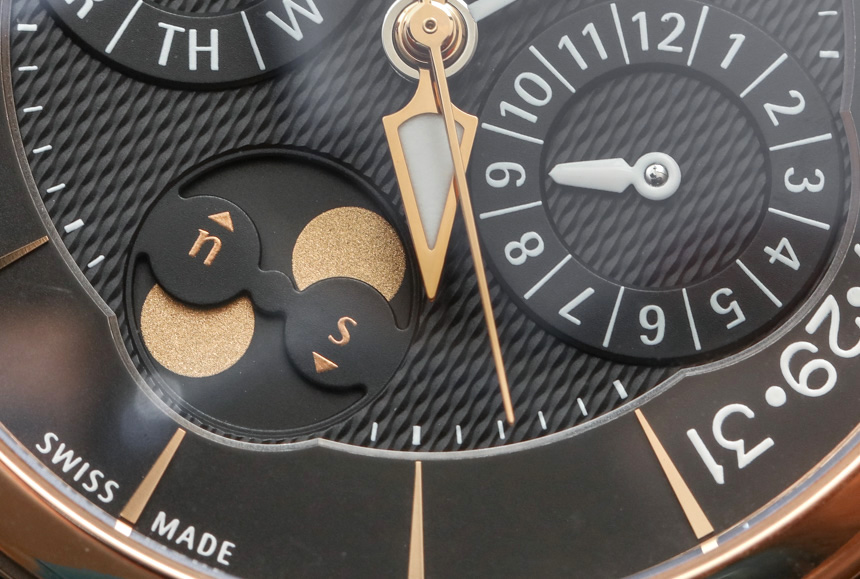
I prefer this black-dial version of the Parmigiani Tonda Quator, but Parmigiani also makes a silvery “Sable-colored” model. Both dial colors are available in either the 18k rose gold or white gold case options. Only the black dial has the “barley grain” texturing on the inner part of the watch face, which I happen to like since it gives the overall look of the watch more character.
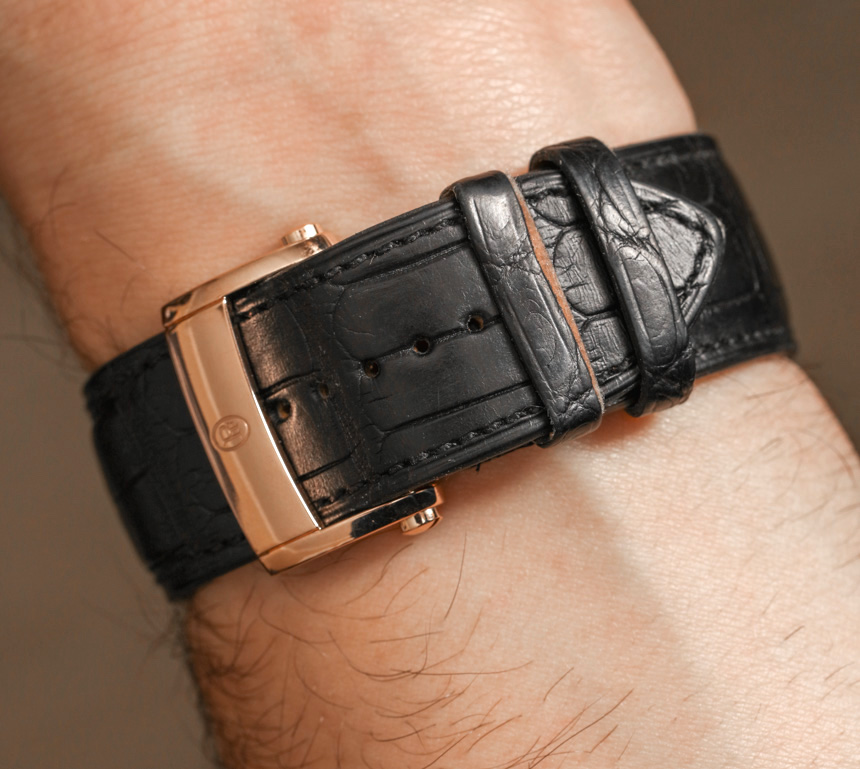
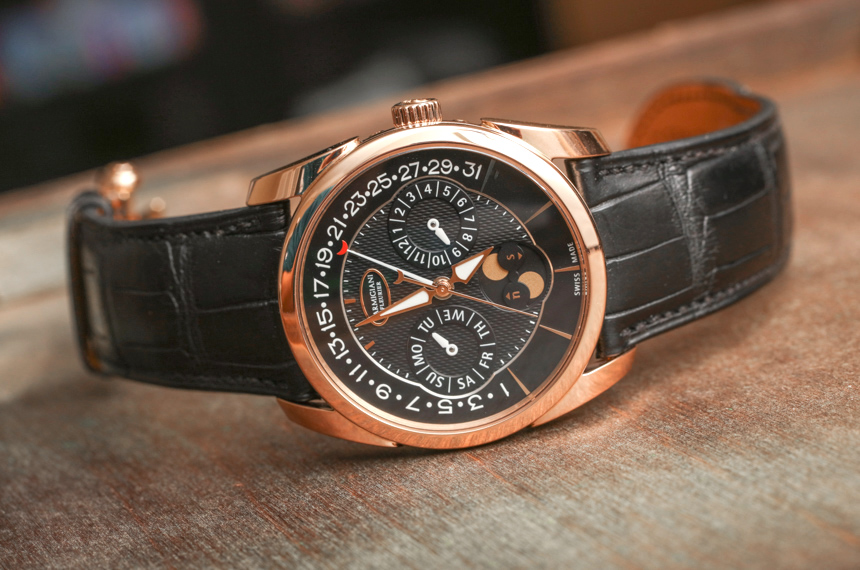
The question for watch enthusiasts is “when is a complicated dress watch the right idea?” The Parmigiani Tonda Quator fits squarely into this category. It used to be that more complicated dress watches were preferred by successful business people. The obvious notion was that complicated calendar models were so much more expensive and represented more true luxuries over time-only or date-equipped models.
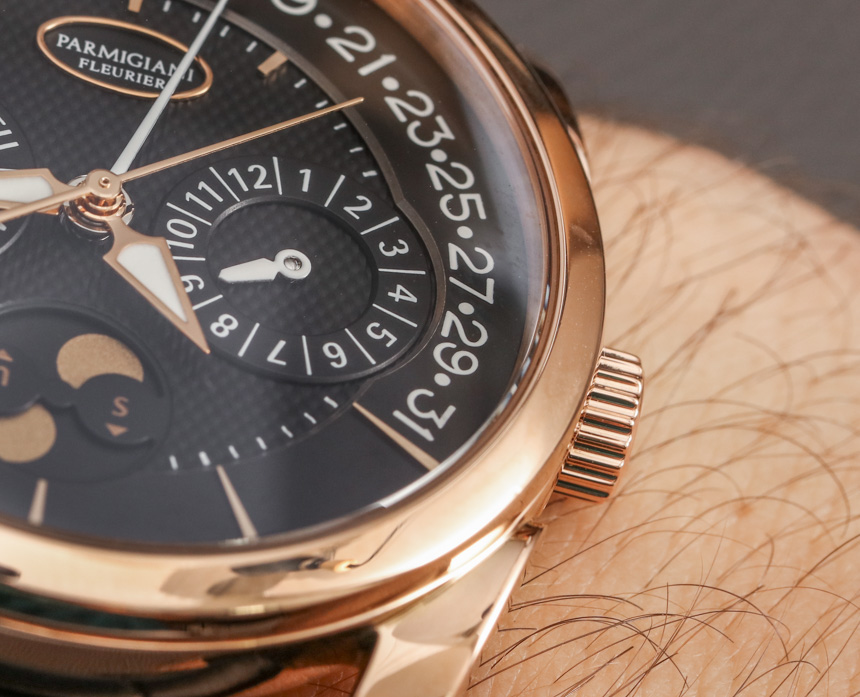
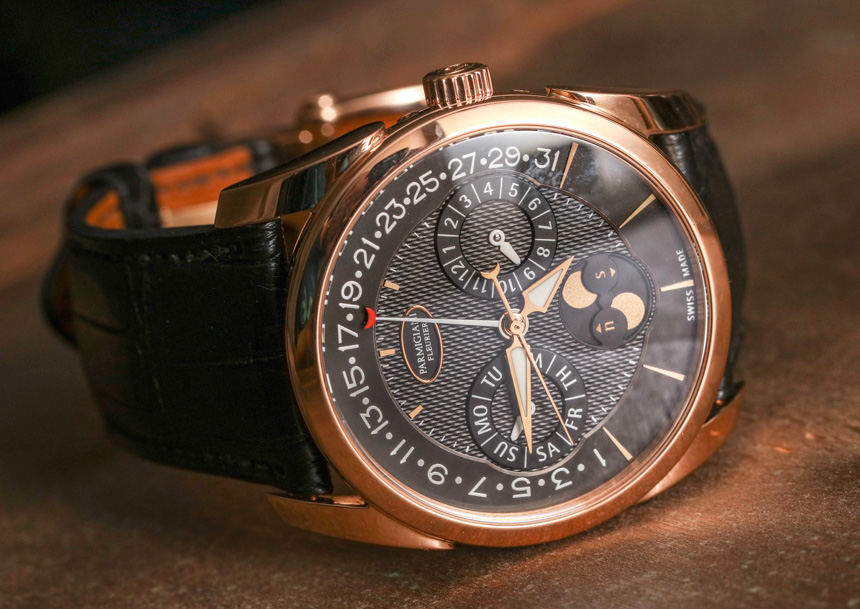
These days, the paradigm has shifted and timepieces like this are a bit more niche – mostly because business people who wear dress watches have a lot more options. It is true that a more complicated dial lends itself to a personality which a simpler time-only dial doesn’t always convey. Thus, for business professionals who tend to wear formal attire and want to have a more original design and send the message of “I am a ‘complication watch’ kinda guy,” then something like the Parmigiani Tonda Quator is a good choice.
This version of the Parmigiani Tonda Quator watch is the reference PFC272-1000200-HA1441, and it is priced at $32,800. parmigiani.com
Necessary Data
>Brand: Parmigiani Fleurier
>Model: Tonda Quator
>Price: US$32,800
>Size: 40mm wide
>Would reviewer personally wear it: Sometimes.
>Friend we’d recommend it to first: Active formal-style businessman, with something he wants to convey about himself to other business people.
>Best characteristic of watch: Tonda case is attractive and comfortable. Dial design is mostly legible and clearly distinctive. Good-looking and nicely finished automatic movement. Good value compared to perpetual calendar version.
>Worst characteristic of watch: Despite symmetrical balance, elements of the dial can be difficult to read. No labeling on inset pushers used to adjust the calendar functions. Design is not for everyone, but it isn’t trying to be either.

